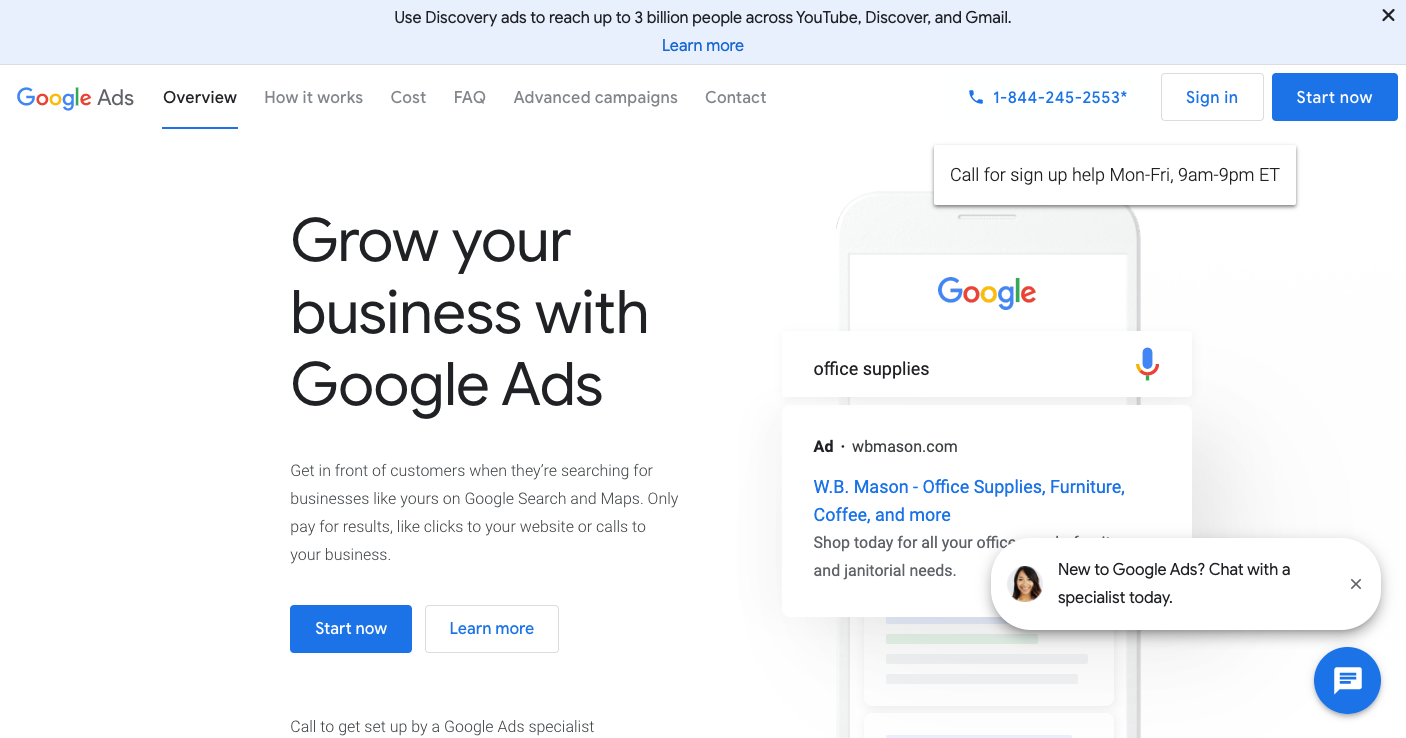Earlier this week, Google Ads announced that it would no longer allow the creation of Expanded Text Ads (ETAs) after June 2022.
We’ve asked some of the industry experts to weigh in with their thoughts on the changes and what advertisers should do to prepare.
While this Change Didn’t Come as a Surprise, Advertisers Are Concerned
Of the folks we spoke to, nearly every single advertiser mentioned that they had assumed the change was eventually coming, and that they weren’t surprised by the change. Most saw this change coming when the interface was updated to make Responsive Search Ads (RSAs) the default for new ad creation.
Though the change didn’t come as a surprise, it still hasn’t been well received.
According to Kirk Williams, owner of ZATO, this complicates things for folks who want tight control, “The savvy Google Ads advertiser has been seeing this come a long way down the road, so shouldn’t have been surprised by it. That being said, there are still many times where a brand wants to tightly control its messaging, and this complicates matters for them.”
Julie Bacchini, owner of Neptune Moon, shared that while she wasn’t surprised, she was disappointed because ETAs tend to perform well. Said Bacchini, “I think the writing has been on the wall for this for some time. You’ve had to take several steps to just create ETAs for a while now. That being said, I am sorry to see them go. In most of my accounts, ETAs perform as well, or oftentimes, better than responsive search ads.“
Michelle Morgan, Co-Founder, Paid Media Pros shared Julie’s sentiments, “Unfortunately, this change doesn’t come as a big surprise. It was telling when Google hid the ETA creation process in the interface and framed the decision as a “test”. I’m honestly sad to see ETAs be phased out.”
Other advertisers also noted the difference in delivery – with RSAs often getting more visibility than ETAs in the same ad group, even when campaigns were set to rotate indefinitely. “Frankly this move was inevitable on Google’s part, and shouldn’t be a surprise to advertisers who have noticed Google Ads making RSAs the main option in the UI and biasing toward them in the ad auction,” said Tim Jensen, Campaign Manager, Clix Marketing.
Navah Hopkins, VP of Strategic Marketing at Adzooma, shared the same sentiment, saying, “They’re hidden in New ad accounts and almost always get less screen time than RSAs.”
What Does This Change Mean for Advertisers?
The biggest frustrations that advertisers shared were the lack of control and the lack of visibility into reporting.
Advertisers shared concerns about the lack of control both in terms of control over the ad copy, control over specific ad copy testing and also control in a broader sense, as it pertains to a greater trend with Google Ads moving toward automation.
Michelle Morgan and Tim Jensen shared that it was “another blow to the control that advertisers have had in the past.”
Joe Martinez, Co-Founder of Paid Media Pros shared that the lack of control is a concern, stating “This is the first major change from Google that makes me a little nervous. Performance on ETAs versus RSAs has been mixed for my clients. We were always happy to test but that was with the comfort knowing we could turn them off and use ETAs. I’m just hoping they don’t remove the feature of pinning headlines and descriptions to at least have some control.”
Brooke Osmundson, Senior Director of Digital Strategy, NordicClick shared concerns for advertisers in heavily regulated industries, stating, “It does put regulated industries at risk and in tough positions because we have many clients who need full and strict ad approval before running. Having to move to Responsive Search Ads exclusively will cause a short-term learning curve to those industries and legal reviewers.”
Robert Brady, Founder, Righteous Marketing, shared concerns about losing insights that fueled other areas of marketing, sharing, “The reason I’m saddened by the news is because it eliminates a large opportunity to gain customer insights. Testing ad copy in Google Ads has always been a fast & efficient way to test messaging with prospective customers/clients. You could put a couple of variations out there that were quite different and have hard data to let you know which angle resonated better. With the abysmal reporting of RSAs. I don’t use the word lightly, but only showing impressions on combinations? This insight is now hidden inside the black box. Obviously, the industry will adjust and continue to thrive, but it will be in spite of Google not because of Google in this case.”
Kirk Williams also mentioned concerns with lack of visibility into reporting, stating, “As Fred Vallaeyes recently noted on Twitter, we have major concerns with wanting better reporting as to the unique elements of RSAs to help us make better inputs ourselves (currently we only get impressions insights for the various elements). Regardless of what one thinks about the decision, Google continues its trudge towards a fully-automated system in every way, ad text now included.”
Mark Irvine, Director of Paid Media at Search Labs worries about the unpredictability of RSAs and notes the time to rollout may be indicative that challenges for advertisers are anticipated: “The change is a frustrating one – I even consider myself a fan of RSAs but they’ve certainly still got their flaws. The way that machine learning is designed – it’s supposed to produce wonky and unpredictable results at times. That’s why even Google had recommended including a mix of ETAs and RSAs in your ad groups for the past few years.
Google’s leaned in more heavily recently to make RSAs the default and recommended ad type to promote adoption, but this seems like a brash decision to force adoption.
Seeing a 10-and-a-half month timeline on this kind of change is also worth raising an eyebrow.
I believe this is the longest timeline for a major ad update that Google has ever shared. Google originally only gave advertisers 5 months to migrate to enhanced campaigns, 3 months (and then extended it to 6) to migrate from STAs to ETAs. This long roadmap either emphasizes the significant challenge that Google anticipates advertisers will have or some internal hesitancy that they’ll carry this effort over 4 quarters of work”
What Advertisers Can Do Now
Experts also shared their advice for what they would recommend advertisers work on between now and next June. Many advertisers suggested ramping up testing between now and then.
“My advice for advertisers would be to start using RSAs now if you are not already. Keep your ETAs running for as long as they are working for you and/or available, but know that you will not be able to create new ones in less than a year. Better to start your learning on RSAs while you still have ETAs as an option than waiting until you have no choice,” shared Julie Bacchini.
“For now, I’m solidly in the camp of making as many ETAs and testing as many message combinations as I can with them over the next year to make sure my accounts are ready for the deadline next June,” stated Michelle Morgan
Robert Brady expressed relief for the additional time to test, saying, “I am appreciative that they’re giving us 9 months warning. This will allow for many advertisers to do extensive ad testing with their ETAs and make a few “champion” versions before the deadline.”
Other advertisers emphasized the value of pinning to make up for the loss of control.
“One of my tips would be to utilize the sacred “pinning” when needed or possible. At the end of the day, we need to learn how to work with automation, not against it. I’m sure we will see long-term gains, but first, we will deal with the shortcomings with our clients,” shared Brooke Osmundson
Navah Hopkins shared similar sentiments, stating, “The biggest “go do” off of this news is ensuring your RSAs have the appropriate pinned creative so you can simulate the ETA effect. RSAs have come a long way on the performance front and this might be an uncomfortable change for some, but ultimately shouldn’t cause panic. “
Navah also noted that advertisers should plan more time for tests, sharing, “With RSAs no longer having two ETAs to “teach” them, you will want to build an extra week or so into learning periods and begin running RSAs if you aren’t already. Be mindful that their success/failure heavily relies on different creative to test, so break out those creative hats”
However, while pinning is currently available, some advertisers indicated some concerns that Google sunset the pinning feature in the future as well.
“With pinned headlines and descriptions, an advertiser can at least aim at replicating an ETA-like ad with their RSA… for as long as Google will allow that loophole before removing it,” said Kirk Williams.
Tim Jensen and Joe Martinez both mentioned that they hope that Google will continue to allow advertisers to retain the ability to pin headlines and descriptions in RSAs in order to maintain some control.





